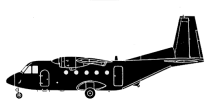Incident Overview

Description
The Cessna Caravan took off from San Juan at 11:38, for a flight to Tamarindo (TNO). An intermediate stop at La Fortuna was made at 11:55 to drop off a Japanese tourist. The flight left La Fortuna again at 12:05 for a 35-minute flight to Tamarindo. The aircraft collided with the active 5380 feet (1650 m) high Arenal volcano, at around 656 feet (200 m) below the crater. PROBABLE CAUSE (translated from Spanish): The Unidad de Investigaci¢n de Accidentes Areos (UIA), determined that the probable cause was the pilot’s unsafe flying and failure to maintain adequate separation (vertical and horizontal) with mountainous terrain and not remain in VMC. Moreover, lack of timely corrective action by the flight crew allowed the aircraft to fly in a controlled manner and unnoticed into the ground. CONTRIBUTING FACTORS: 1. Loss of situational awareness and attention from the crew. 2. Inadequate monitoring and enforcement by the pilot not flying. 3. Lack of application or adherence to standard operating procedures established by SANSA. 4. Using flight procedures not written or approved. 5. Lack of culture regarding operational safety.
Source of Information
http://youtu.be/XV5cTvmjAS8?t=3m38shttp://youtu.be/XV5cTvmjAS8?t=3m38sPrimary Cause
Pilot’s unsafe flying and failure to maintain adequate separation with mountainous terrain, leading to uncontrolled flight and impact.Pilot’s unsafe flying and failure to maintain adequate separation with mountainous terrain, leading to uncontrolled flight and impact.Share on:





